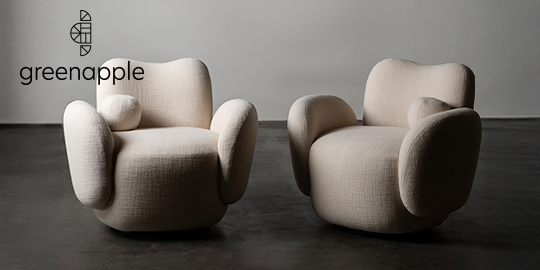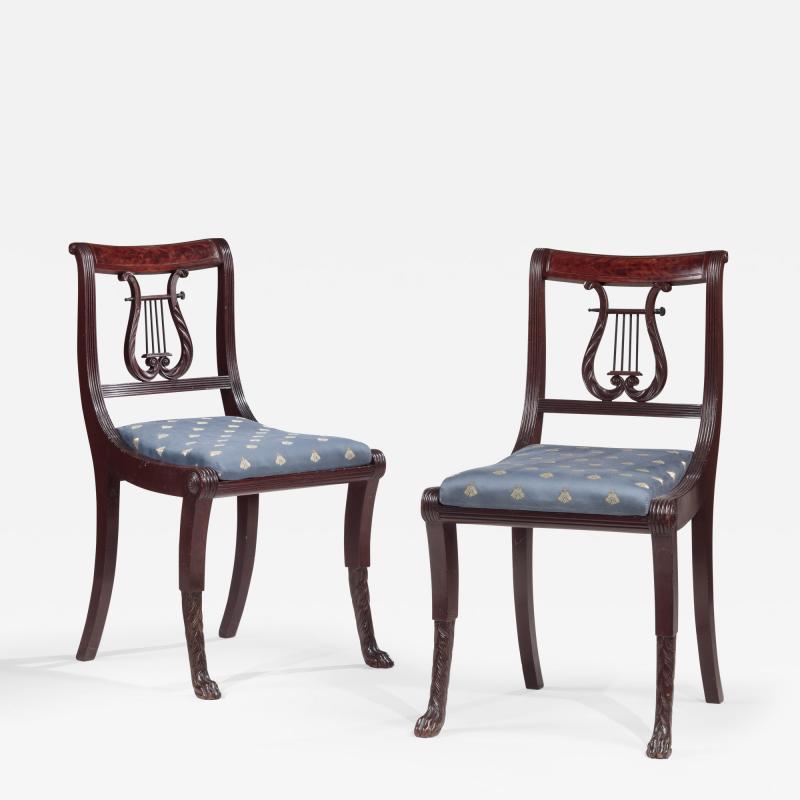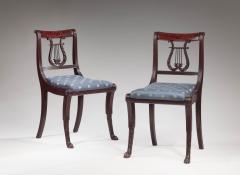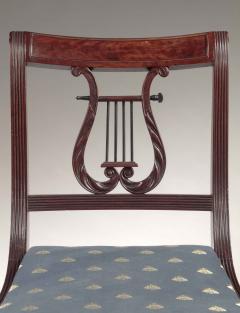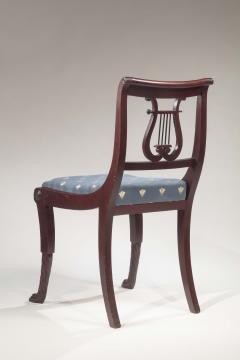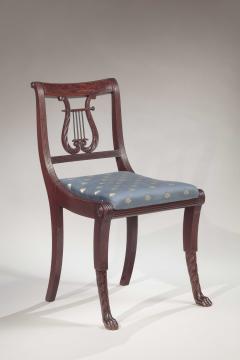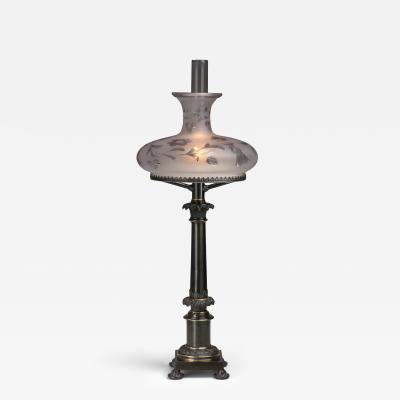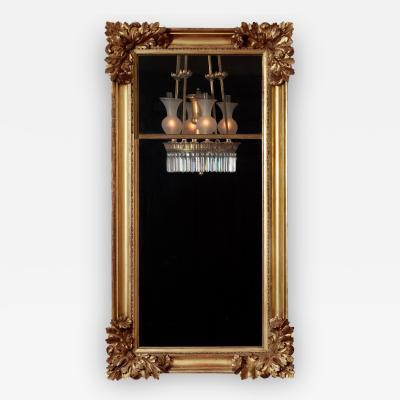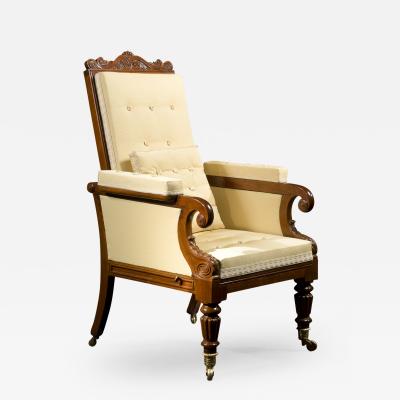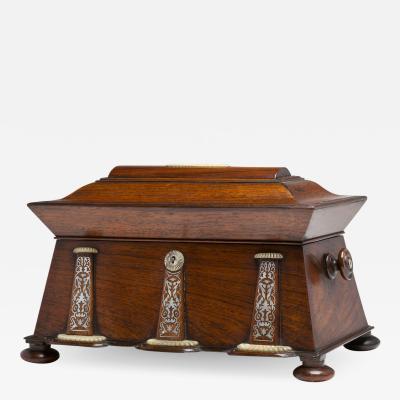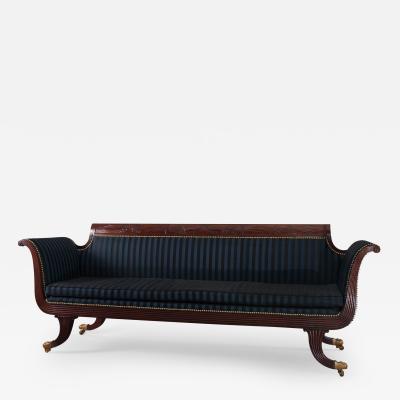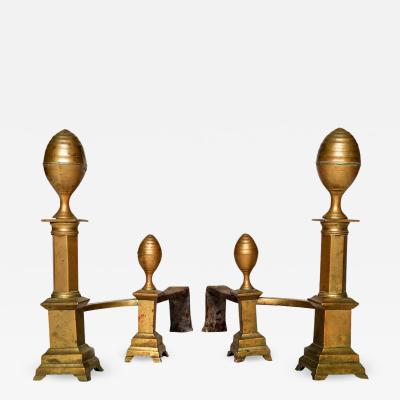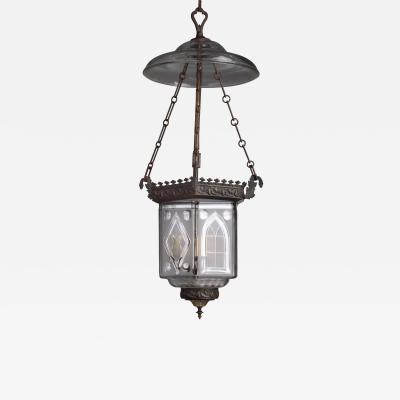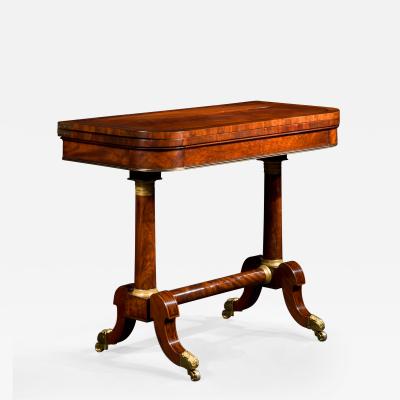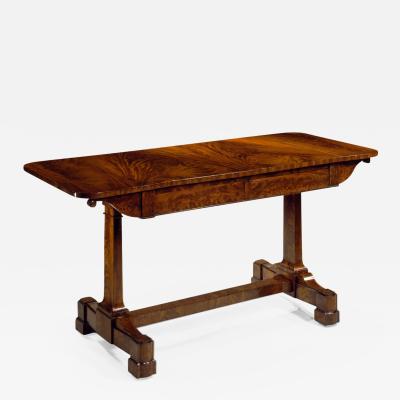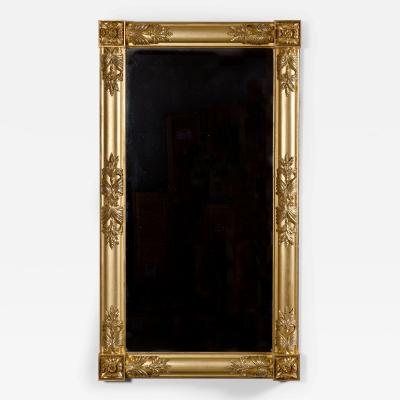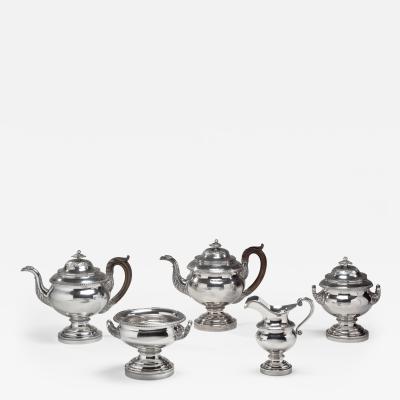Listings / Furniture / Seating / Side Chairs
Pair of Klismos dining chairs
-
Description
PAIR OF CLASSICAL CARVED MAHOGANY KLISMOS DINING CHAIRS
Attributed to Duncan Phyfe (1770-1854)
New York, c. 1816
Each chair with a scrolled, bowed, paneled and inlaid crest rail above a stay rail composed of a carved lyre with four ebonized "strings" and yoke with carved acanthus leaves, held between reeded styles and shaped, reeded stay brace, the styles continuing to the reeded seat rails and "hairy" dog's legs and carved paw feet. Turned bosses are at the top of the styles and at the knees. Each chair with its original ash slip seat frame. The ash front seat rails marked III and VII respectively.
H: 32¾" W: 18" D: 19" each
These lovely chairs are the iconic forms most closely identified with Duncan Phyfe. This is largely due to a drawing of the form on the verso of an 1816 invoice from Duncan Phyfe to his client, Charles Nicoll Bancker (1777-1869), and that such a chair is visible in the doorway of Phyfe's shop in a period painting of Phyfe's establishment on Fulton Street in Manhattan. Additionally, they appear to be identical in every detail to those made by Phyfe for Bancker, now in the collection of the Brooklyn Museum (67.19.5). These are illustrated in Peter M. Kenny and Michael K. Brown's definitive study, Duncan Phyfe: Master Cabinetmaker in New York (New York: Metropolitan Museum of Art, 2011), 188-189, pl. 20. As Kenny points out, these chairs are also largely the same as those documented to Phyfe, made for James Brinckerhoff in the same year (see pl.17).
Virtually identical chairs are also published in Charles Over Cornelius's Furniture Masterpieces of Duncan Phyfe (plate VI), and the Girl Scouts Loan Exhibition Catalog of 1929, (plate 790). This pair of chairs is also published in Nancy McClelland's Duncan Phyfe and the English Regency 1795-1830 (New York: William R. Scott, 1939), 279 pl. 266, described as those made for William Livingston, Governor of New Jersey (1776-1790). Fourteen of the original 24 Livingston chairs are now in the collection of the Metropolitan Museum of Art (Accession Number: 65.188.10).
The form is a distinctively New York interpretation of the ancient Greek Klismos chair, a style that became popular during the French Revolution, when Parisian revolutionaries adopted Greek and Roman furniture forms as symbols of the Republican society they hoped to create. The lyre is a common symbol of ancient Greek civilization and symbolized wisdom and moderation to the Greeks. -
More Information
Origin: United States Period: 19th Century Materials: Mahogany Condition: Good. Excellent: each chair has an old repair to the style where it meets the side seat rail, one glued and the other reinforced with a dowel or screw. Retaining old surface. Modern upholstery. Creation Date: c. 1816 Styles / Movements: Regency, Traditional, Neoclassical Book References: Peter M. Kenny and Michael K. Brown', Duncan Phyfe: Master Cabinetmaker in New York (New York: Metropolitan Museum of Art, 2011), 188-189, pl. 20. Dealer Reference #: S-S-2203131 Incollect Reference #: 713314 -
Dimensions
W. 18 in; H. 32 in; D. 19 in; W. 45.72 cm; H. 81.28 cm; D. 48.26 cm; Seat H. 17 in; Seat H. 43.18 cm;
Message from Seller:
Welcome to Carswell Rush Berlin Antiques, a premier New York City-based dealer specializing in American antique furniture and decorative accessories from the Classical period (1800-1840). For inquiries, please contact us at 646.645.0404 or email carswellberlin@msn.com.





